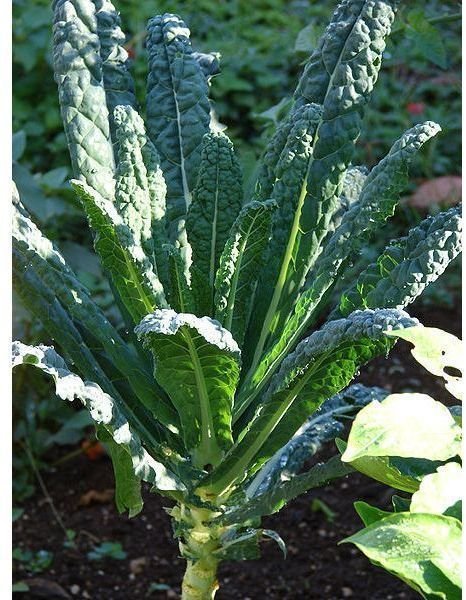Kale Nutrition,Storage and Preparation: What Everybody Ought to Know about its Health Benefits
The Health Benefits of Kale: A Tasty and Nourishing Vegetable
Kale is one of the world’s oldest vegetables, and is also one of the most delicious. The brilliantly-colored leaves are rich in nutrients, and add great color to any dish. However, improper cooking can make a kitchen smell like old army socks. Here’s what you need to know about kale nutrition, cooking, and storage.
Image Credit: Brassica oleracea/Wikimedia Commons/Forest & Kim Starr
Types of Kale Available
Kale has been cultivated for at least 2,000 years. A member of the cabbage family, it is considered to be closer to wild cabbage varieties than most other cabbages such as nappa or bok choy. Though it grows in warm climates, it does better in colder climates, and is historically popular with Europeans. (Herbst, 1995).
Kale grows in loose bunches of leaves, not in heads. Leaves are usually curled (some people say they look “frilly”). Kale is usually deep green in color, though there is a specific variety, known as dinosaur kale, that has very dark blue-green leaves and an embossed texture. (WHFoods, 2010).
Kale Nutrition and Health Benefits
Kale is a very nourishing vegetable. The dark green leaves are rich in calcium (Yeager, 2007), which in addition to helping build strong bones and teeth, also seems to play a role in weight loss. (Popoff, 2010). It is also a good source of vitamins A and C, folic acid, and iron (Herbst, 1995).
Also, kale can help preserve long-term health. Kale contains the compound Indole-3-carbinol. Scientists are discovering this compound lowers estrogen levels, which means kale can help women avoid breast cancer. Kale also contains flavinoids, known to reduce the risk of heart disease (Yeager, 2007).
However, kale does present risks for people on some types of medications. Blood-thinners such as warfarin work by lowering vitamin K levels, and since kale is extremely high in vitmain K, people on anti-coagulant medication should avoid it. (Yeager, 2007).
How to Cook With Kale
Kale bunches should be richly-colored and relatively small, with crisp, firm leaves. Limp leaves or any yellow color indicate advanced age. Store kale in the coldest part of the refrigerator and cook within 2-3 days. (Herbst, 1995). To prepare kale, fold the leaf in half and cut off the stem (which is too tough to be eaten). Then cut the leaves into the desired size.
Kale is too tough to eat raw and is usually wilted. Wilting in butter or oil - a few teaspoons are sufficient - with aromatic vegetables such as onions or shallots, and a bit of salt makes it a great side dish. Kale can also be wilted in water or broth for use in soup or for mixing into mashed potatoes; kale and potatoes is called colcannon, which is an Irish classic. Take care to avoid over-cooking, as, like all cabbages, kale releases a suferic (rotten-egg/gym sock) smell when overcooked.
Kale can also be frozen. A quick dip in boiling water, then in ice water (this is called blanching and shocking) sets the green color. The kale can then be arranged on a wax-paper-lined trays and frozen, then moved to a plastic storage bag. Freezing actually releases more of the kale’s flavor, and frozen kale can be stored for up to 6 months.
Now that you know about the types of kale, the health benefits of kale, and how to cook it, why not try some tonight?
References
Herbst, S. (1995). Kale. The Epicurious Food Dictionary. Retrieved 17 May, 2010 from https://www.epicurious.com/tools/fooddictionary/
Popoff, D. (Producer). 2010, 4 January. Good Eats: Live and Let Diet. Atlanta: Be Squared Productions.
WH Foods Staff. (2010). Kale. The George Mateljan Foundation. Retrieved 17 May, 2010 from https://www.whfoods.com/genpage.php?tname=foodspice&dbid=38#descr
Yeager, S. (2007). The Doctor’s Book of Food Remedies. Published by Rodale, Inc, NY New York.
